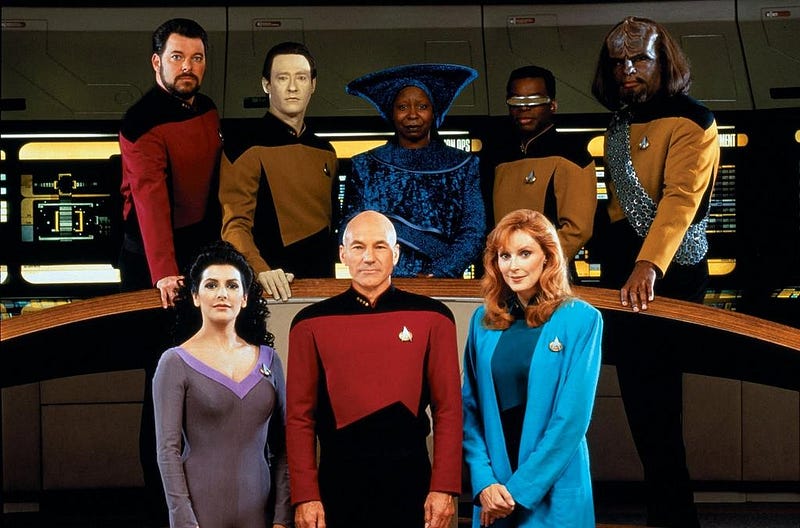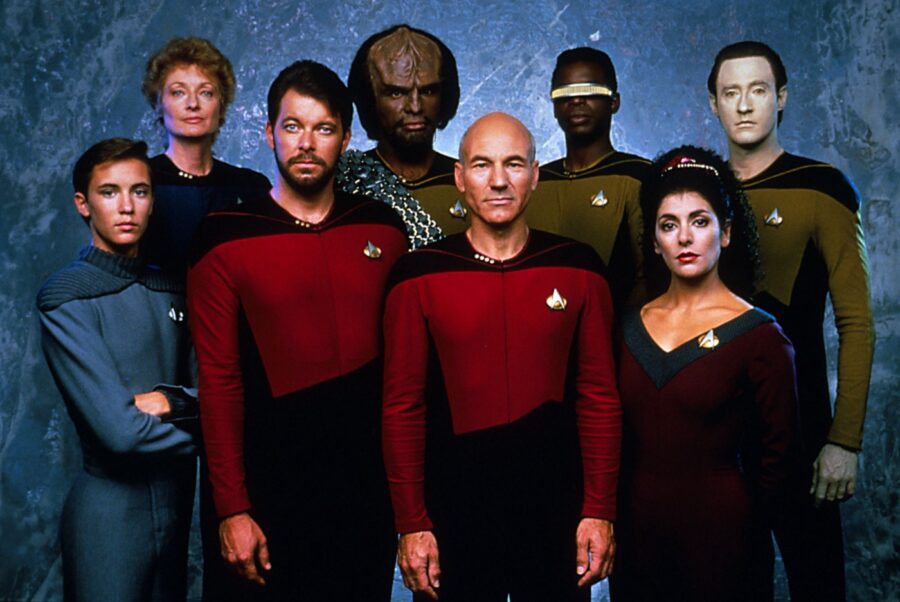War is Hell Even in the 24th Century
How the fall of a world super power and the fall of the Berlin Wall were cleverly acknowledged by the world’s best TV sci-fi franchise

This past week, seemingly lost amid Veterans Day, Kim Kardashian’s exposed buttocks and the anticipation of Thanksgiving, Black Friday, the holiday season, and all that surrounds it, was the 25th anniversary of a significant historical event: The fall of the Berlin Wall in 1989.
For those who aren’t history buffs or were too busy daydreaming or goofing off during that stuffy history class lecture, the Berlin Wall was a barrier erected by East Germany following World War II to allegedly protect the Eastern Bloc from “fascists” and anti socialist factions.
Yet, the barrier which came equipped with large concrete walls separating the Eastern and Western territories of the country and patrolling guards, and severely limited freedom of movement from citizens choosing to emigrate and defect from the oppressive socialist state, existed from Aug. 1961 to 1989 and came to be emblematic of the “Iron Curtain.” It became a tangible representation of the ideologies separating East and Western Europe.
Children of the 80s and Gen-Xers having grown up during the Cold War will undoubtedly recall the political tensions of the era, replete with nuclear threats eerily reminiscent of the atomic era, and will also remember former U.S. President Ronald Reagan’s famous plea to Soviet leader Mikhail Gorbachev, “Mr. Gorbachev, tear down this wall.”
The wall was indeed torn down on Nov. 9 1989 while the world watched.
The Twilight Zone creator Rod Serling once said science fiction could be utilized to address social issues and went on to use the relatively new medium of television to adroitly tell his little morality plays on a weekly basis.
Similarly, a revival of Gene Roddenberry’s Star Trek, the celebrated science fiction program which gave TV its first interracial kiss had been underway since 1987, with a new captain and crew flying through the small screen for a new generation to follow.
It took the fledgling series a few seasons of misfires to find its audience, but once it did, it went on to captivate the minds and hearts of Trekkers and sci-fi lovers for another five, while concurrently delivering some unforgettable television.

Three days before the wall came down, Star Trek: The Next Generation aired the episode “The Enemy” a riveting look into how two of the program’s warring factions, the treacherous and militaristic Romulans and The United Federation of Planets (including charter member Earth) must work together to retrieve two missing officers from the unstable planet Galordon Core, despite each side’s mistrust and contempt for the other.
Living and working in the Cold War era, it is probably not that surprising to see how the writers of the show expertly weaved parallels to world events and foreign policy into their narrative, but their allegory is no less powerful, even viewed 25 years later. The two galactic superpowers flirt with mutual destruction throughout the 45 minute drama, and it makes for some delicious tension. Themes of loyalty, bigotry and nationalism are also explored.
At one point, Enterprise Captain Jean Luc Picard (played as usual with the regal elegance of Shakespearian trained actor Patrick Stewart) tells his first officer Will Riker that, if the situation is mishandled, “history may remember Galorndon Core alongside Pearl Harbor and Station Salem-One, as the stage for a bloody preamble to war.”
What is most striking is how well this, and other war themed episodes in the Star Trek franchise, have stood the test of time.
“The Enemy” of course, followed in the footsteps of the original series and harkens back to the 1966 episode “Balance of Terror” in which the Romulan galactic empire is first introduced.
That classic episode features an interstellar tactical cat-and-mouse game in which Enterprise Captain James T. Kirk (William Shatner) proves his military superiority over his Romulan counterpart, who prefers suicide over the shame of utter defeat in battle. A perfect testament to the senselessness of war and another mesmerizing hour of television.
“The Enemy” will probably not be remembered as the best war themed episode in Star Trek history, virtually the entire late run of the 90s spin-off series Star Trek Deep Space Nine including the excellent “In the Pale Moonlight” will be considered by critics and fans as the best the franchise has to offer.
“The Enemy” is not even Picard’s best moment confronting a callous adversary. That honor probably goes to “Chain of Command”, a disturbing look into torture and a behind the scenes exploration of the treatment of prisoners of war.
However, the best science fiction, and the best fiction in general, mirrors the world we inhabit. While the made for TV 1983 movie The Day After will probably serve as the ultimate examination of Cold War fears and nuclear era apprehensions, “The Enemy” expertly anticipates the fall of the Berlin Wall and Communism and embodies the dangers of brinksmanship, while serving as a time capsule of sorts, even a quarter of a century after these events occurred.
Not too shabby for what some had written off as an inferior version of a television classic.
Ariel Carmona Jr. is a former editor-in-chief of the Mountaineer newspaper at Mt. San Antonio College where he also served as web editor and newsroom assistant. He received his bachelor’s degree in journalism from California State Polytechnic University, Pomona and an M.A. in Communications from California State University Fullerton. Ariel has written for the O.C. Register, the SGV Tribune and AOL’s Patch media. He currently works in Houston, TX as a reporter for Community Impact Newspapers. He also writes about geek culture issues at www.medium.com/the-geek-bazaar and frequently contributes to comicsbulletin.com.
This story is a part of a special alumni series. Students who have graduated or transferred from Mt. San Antonio’s journalism program are featured weekly.
Substance is a publication of the Mt. San Antonio College Journalism Program. The program recently moved its newsroom over to Medium as part of a one-year experiment. Read about it here.










